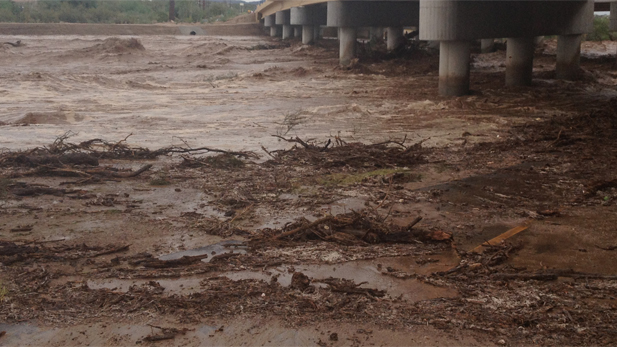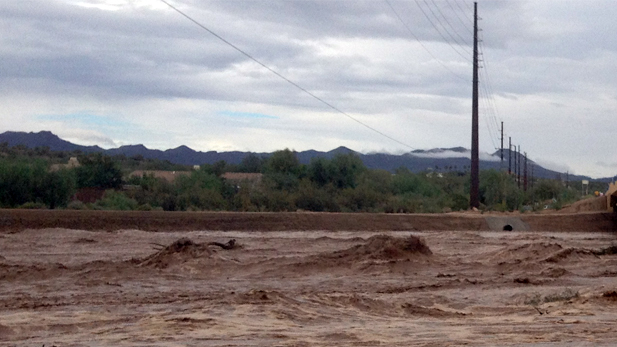
Two women have died in separate incidents because of heavy floods in the Tucson area.
The Pinal County Sheriff's Office said this afternoon a 76-year-old woman drowned after trying to cross a wash near Oracle Junction, north of Tucson.
The department got a call from the woman's husband reporting their vehicle had been trapped in a wash. The woman was swept by the current. Her husband made it out.
Earlier Monday, a woman's car was swept away by floods on the east side of town. Tucson Fire Department spokesman Barrett Baker said rescue units responded to a residential area near 22nd Street and Kolb Road at around 9:30 a.m. When they arrived, the car was submerged and couldn't be reached. The water was 10 to 15 feet high, Baker said.
Several roads were closed throughout Tucson because of heavy flooding, including Overton Road at the Canada Del Oro Wash, Limberlost at the Agua Caliente Wash, Wentworth Road at Tanque Verde Creek, Avra Valley Road at the Brawley Wash, Tanque Verde Road at Conestoga Avenue, and Silverbell Road between Avra Valley Road to Sasco Road.
County officials said people should proceed with caution in other roads around town, including Sahuarita Road between Houghton Road and Wentworth Road, Old Spanish Trail at the Rincon Creek, and Valencia Road between Camino Verde to Viviana Avenue.
Pima County said in a media release earlier today it would dismiss county employees on a staggered schedule starting at 3:15 p.m. Monday. Employees were divided in groups, releasing those who live the furthest from work first.
County libraries in Tucson also announced they would all be closing at 5 p.m.
Rain storms also hit the Phoenix area early Monday, flooding major freeways, and causing many water rescues in the area. Mayor Greg Stanton declared a state of emergency for the city.
Sections of Interstate 10 and 17 in west Phoenix were closed.
The National Weather Service recorded 2.99 inches of rain in the city by about 7 a.m., breaking the old record of 2.91 inches set in 1933.



You need to be a member of Earth Changes and the Pole Shift to add comments!
Join Earth Changes and the Pole Shift